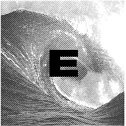
Acronyms and Abbreviations
3-D
Three-Dimensional
AOSN
Autonomous Ocean Sampling Networks
APROPOS
Advances and Primary Research Opportunities in Physical Oceanography Studies
ATLAS
Autonomous Temperature Line Acquisition System
ATOC
Acoustic Thermometry of Ocean Climate
AUV
Autonomous Underwater Vehicle
BATS
Bermuda Atlantic Time-series Study
BOREHOLE
BOREHole Observatories, Laboratories, and Experiments
BTM
Bermuda Testbed Mooring
CLIVAR
CLImate VARiability and predictability programme
CMB
Core-Mantle Boundary
CO2
Carbon Dioxide
CORK
Circulation Obviation Retrofit Kits
CTD
Conductivity, Temperature, and Depth
DC
Direct Current
DEOS
Deep Earth Observatories on the Seafloor (later changed to Dynamics of Earth and Ocean Systems)
ENSO
El Niño/Southern Oscillation
FUMAGES
Future of Marine Geosciences
GEO
Global Eulerian Observations
GOOS
Global Ocean Observing System
GPS
Global Positioning System
H2O
Hawaii-2 Observatory
HOT
Hawaii Ocean Time-series
HUGO
Hawaii Undersea Geo-Observatory
IMET
Improved METeorological
ION
International Ocean Network
IRIS
Incorporated Research Institutions for Seismology
JGOFS
Joint Global Ocean Flux Study
JOIDES
Joint Oceanographic Institutions for Deep Earth Sampling
LEO-15
Long-term Ecosystem underwater Observatory, 15 meters below the surface
LNB
Large Navigational Buoys
LTER
Long-Term Ecological Research Network
MBARI
Monterey Bay Aquarium Research Institute
NASA
National Aeronautic and Space Administration
NCAR
National Center for Atmospheric Research
NEMO
NEw Millennium Observatory
NEPTUNE
North East Pacific Time-series Undersea Networked Experiments
NODC
National Oceanographic Data Center
NRC
National Research Council
NSF
National Science Foundation
ODP
Ocean Drilling Program
OEUVRE
Ocean Ecology: Understanding and Vision for REsearch
ONR
Office of Naval Research
OOPC
Ocean Observing Panel for Climate
OOSDP
Ocean Observing System Development Panel
OSB
Ocean Studies Board
OSN
Ocean Seismic Network
RIDGE
Ridge InterDisciplinary Global Experiments
ROV
Remotely Operated Vehicle
SBIR
Small Business Innovation Research
SEIZE
SEIsmogenic Zone Experiment (MARGINS, JOIDES)
SOEST
School of Ocean and Earth Science and Technology (University of Hawaii)
SOSUS
SOund SUrveillance System
TAO
Tropical Atmosphere-Ocean array
UCAR
University Corporation for Atmospheric Research
UNOLS
University-National Oceanographic Laboratory System
WHOI
Woods Hole Oceanographic Institution
WOCE
World Ocean Circulation Experiment


